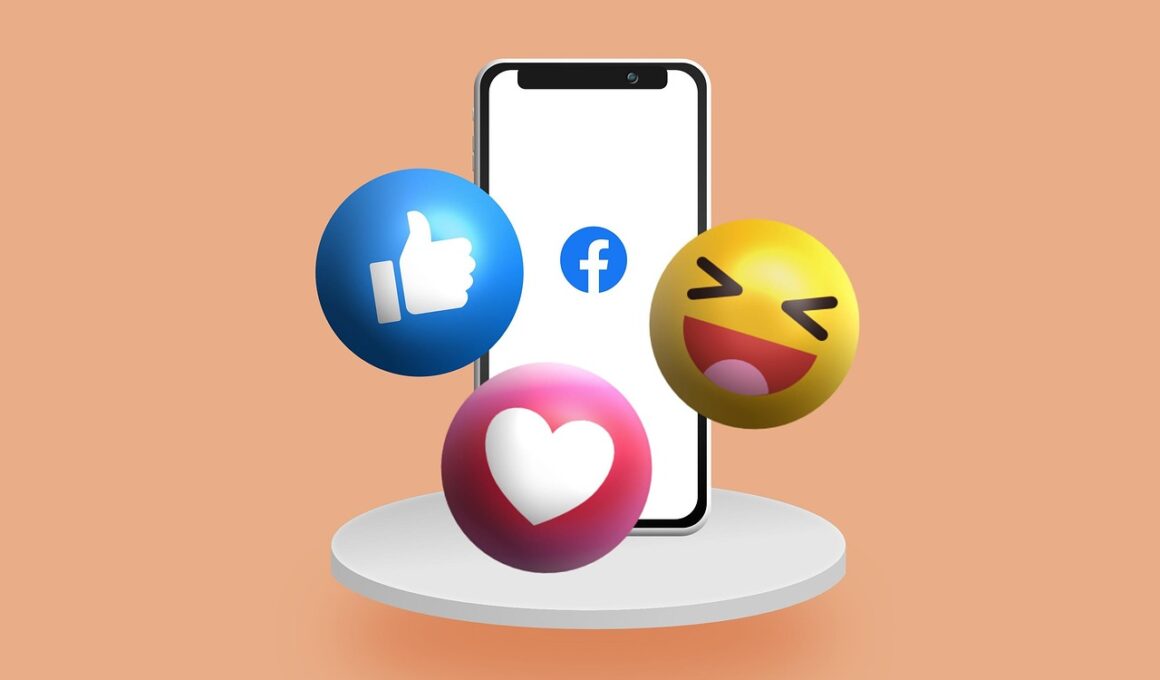Analyzing Consumer Behavior in Mobile Viral Marketing
In today’s fast-paced digital landscape, mobile viral marketing has emerged as a powerful tool for brands aiming to capture consumer attention. Understanding consumer behavior is crucial for developing effective strategies in this area. Consumers are increasingly turning to their mobile devices to interact with content, share experiences, and make purchasing decisions. Therefore, marketers must recognize how engagement on mobile differs from traditional media. A significant aspect of this evolution is the tendency for content to be shared rapidly within social networks. Once a video or message resonates with users, it can spiral into a viral sensation. This phenomenon prompts companies to tailor their marketing approaches, ensuring they align with user preferences and expectations. To succeed, brands need to create content that not only grabs attention but also encourages sharing. This involves analyzing demographic data and user behavior patterns. Tools and techniques like surveys, social media analytics, and focus groups can illuminate consumer preferences. By interpreting this data, brands can tailor their messaging and effectively leverage mobile platforms.
Moreover, instilling a sense of community among users can amplify the effectiveness of mobile viral marketing campaigns. Consumers are drawn to brands that foster genuine connections and interactions. When users feel part of a shared experience, they are more likely to engage with content and promote it further. Enabling features that support community building, such as user-generated content, can enhance this bond. Strategies like challenges or contests can attract user participation and heighten shareability. Furthermore, integrating elements of gamification sparks interest and keeps consumers returning to the brand’s content. It has been shown that consumers enjoy rewards for their engagement, making them more likely to share mobile marketing content with their networks. Pairing these strategies with data-driven insights helps brands to craft messages that resonate better with target audiences. Testing different content types — such as videos, images, and interactive posts — is essential to determine what drives the most engagement. Marketers should continuously assess performance to identify trends, optimizing their strategies for improved effectiveness. Engaging directly with consumers through their preferred channels is key to success.
The Role of Influencers in Mobile Viral Marketing
Influencer partnerships play an essential role in mobile viral marketing strategies. These individuals have cultivated dedicated followings and are perceived as trusted sources by their audiences. Collaborating with influencers allows brands to reach a wider group and leverage their authority. Influencers can help amplify marketing efforts by introducing products in relatable ways. This authenticity often makes it more acceptable for consumers to engage with brands. Moreover, mobile platforms make it easier for influencers to create and share visually appealing content directly. It’s crucial to select influencers whose audience aligns with the brand’s target demographic. Using tools to analyze an influencer’s engagement rates and audience demographics can help ensure a successful collaboration. Effective partnerships should also encourage authentic promotion rather than forced advertisements, making recommendations feel more genuine. Additionally, focusing on micro-influencers can yield high returns as they often boast strong engagement among niche audiences. An integrated approach that combines influencer marketing with well-crafted mobile content maximizes the potential for virality. By tapping into influencer networks, brands can create campaigns that resonate at a deeper level with consumers.
Another crucial aspect to consider in mobile viral marketing is meme culture. Memes reflect the shared cultural moments and ideas prevalent among specific audiences. As such, incorporating elements of meme culture into marketing campaigns can significantly enhance relatability. Brands that understand current trends can create content that feels organic rather than contrived. This takes a keen awareness of ongoing conversations within social media platforms and feeds. Marketers should deploy strategies that allow for creativity while also keeping pace with ever-evolving trends. This dynamic approach can keep content fresh and engaging. Successful campaigns often encourage users to partake in the creation process, promoting engagement. Allowing audiences to create their memes related to a brand can further enhance this impact. Additionally, brands could align with existing memes while adding their unique twist, encouraging sharing among users. The rapid-fire pace of mobile interactions means the window for creating timely, viral content is small. Employing agile methodologies enables brands to respond quickly to meme trends and craft relevant messaging that connects with audiences deeply. Crafting such strategies is integral to maximizing virality.
Measuring the Success of Mobile Viral Campaigns
Understanding the effectiveness of mobile viral marketing campaigns requires thorough measurement and analysis. Metrics such as share rates, engagement levels, and conversion rates provide insights into consumer behavior. Brands should establish clear objectives for their campaigns, allowing for focused evaluation. Popular approaches include tracking the performance of content across various mobile platforms such as social media or apps. Moreover, leveraging analytics tools can reveal which aspects of a campaign are resonating the most with audiences. A key indicator of success lies in how often content is shared among consumers, reflecting organic interest. As part of this measurement process, brands should also consider qualitative data, such as user feedback and interactions. Conducting post-campaign surveys can provide qualitative insights into consumer perspectives. Additionally, social listening tools can assist in gauging brand sentiment and consumer reactions. By triangulating quantitative and qualitative data, brands can gain a comprehensive understanding of their audience’s behaviors. Adjusting marketing efforts based on this analysis ensures ongoing improvement and success in mobile viral marketing endeavors.
Adapting to trends is a hallmarks of successful mobile viral marketing. It is essential for brands to stay updated on emerging technologies and changing user behaviors. As mobile devices continue to evolve, so do the ways consumers interact with marketing content. Utilizing augmented reality (AR) and virtual reality (VR) presents new opportunities for immersive experiences. As users are drawn to interactive content, these technologies create potential for inventive campaigns. Implementing AR experiences in the mobile marketing sphere could deliver unique engagement opportunities. Additionally, all mobile marketing strategies must consider the preferences of a diverse audience. Localization can ensure that content resonates with varying cultural backgrounds and languages. Tailoring campaigns to fit regional customs can significantly boost effectiveness. Being aware of different consumer behaviors worldwide also helps brands maximize their reach. As consumers increasingly prioritize personalization, implementing data-driven approaches ensures highly relevant marketing. Marketers should keep experimenting with new formats as mobile consumers are more likely to engage with diverse content. Continuous adaptation and innovation are key for brands aiming to thrive in the competitive mobile landscape.
Conclusion: The Future of Mobile Viral Marketing
Ultimately, the future of mobile viral marketing hinges on understanding consumer behavior and leveraging technology. As trends shift rapidly, marketers must remain agile and adaptable. Emphasizing the importance of tailored and engaging content is paramount in reaching target audiences effectively. By exploring innovative formats and incorporating community elements, brands can connect with consumers on a deeper level. Embracing influencers and meme culture offers avenues for captivating campaigns that resonate. Continuous measurement and optimization ensure campaigns are effective and aligned with changing preferences. As more consumers turn to mobile devices for communication and commerce, brands must invest in understanding these behaviors. The implementation of personalization strategies can further strengthen connections between consumers and brands, fostering loyalty. Through innovative approaches and a commitment to keeping pace with trends, some brands will lead the mobile viral marketing movement. Monitoring changes in consumer sentiment and responding thoughtfully will be essential for ongoing success in this vibrant landscape. Thus, the marketing world continues to evolve, emphasizing creativity and consumer engagement at every turn.
As we look ahead, emerging technologies promise to further influence mobile viral marketing strategies. Innovations like machine learning and artificial intelligence can deliver tailored experiences based on user data. Harnessing these technologies can streamline targeting and personalize content delivery. Furthermore, leveraging data analytics will enhance understanding of consumer interactions and allow for better resource allocation. Brands should also explore the potential of cross-platform strategies, allowing them to reach users where they engage the most. Integrating marketing efforts across different mobile environments can create a cohesive brand experience. Recognizing that consumer behavior is dynamic leads to ongoing experimentation and evolution of marketing tactics. The future of mobile viral marketing is poised for growth. Investment in technologies that allow for better tracking and understanding of consumer trends is critical. As brands navigate these changes, flexibility and adaptability will determine success. Incorporating consumer feedback into future strategies facilitates ongoing improvement and relevancy. This process creates a cycle of innovation that ensures marketing efforts resonate with evolving audiences. Just as consumer preferences continue to shift, so too should marketing strategies, driving brands towards successful and engaging mobile campaigns.


